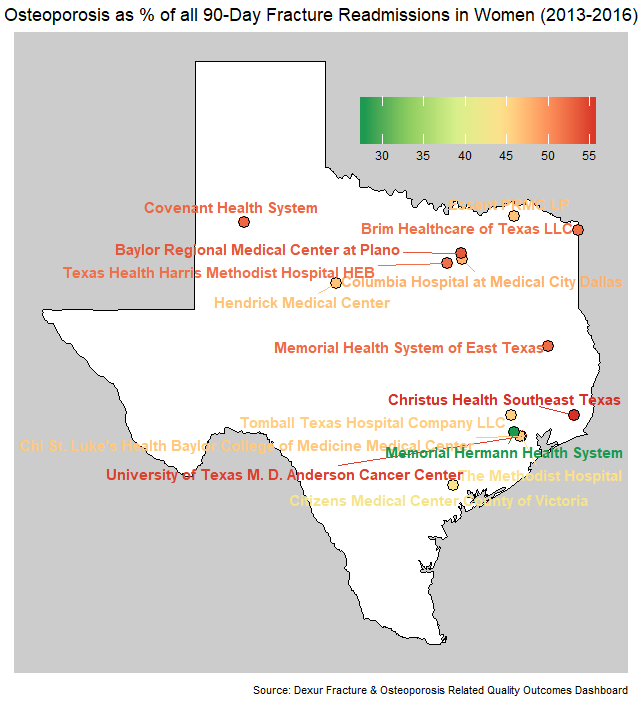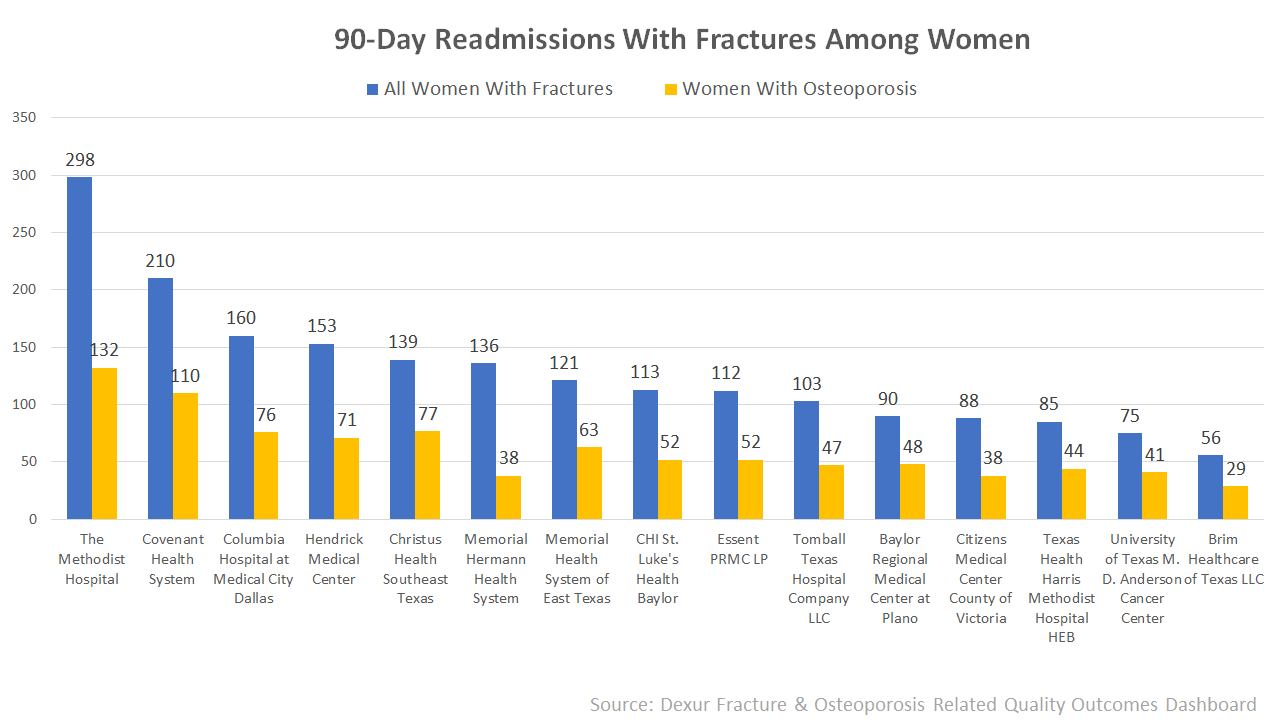47% of 90-Day Fracture Readmissions in Women Involve Osteoporosis, Which Tymlos May Help Address
In Tymlos, Osteoporosis
Get Dexur’s Personalized Hospital Specific Presentation on Quality, Safety, Compliance & Education
By: James Pitt May. 17, 2018
Osteoporosis is a disease that weakens bones and increases the risk of fracture, particularly common in elderly women. First-line treatment is with anti-resorptive drugs like bisphosphonates. A 2017 Lancet study found that patient concerns about bisphosphonates’ side effects limit their use. The American Society for Bone and Mineral Research (ASBMR) recommends that patients on bisphosphonates with low fracture risk take “drug holidays” to decrease their risk of serious side effects.
But a new Loyola University study found limits to this approach. 15.4% of patients who took drug holidays experienced fractures. Many of these patients had existing high risks of fracture, so per ASBMR guidelines they likely should not have taken drug holidays, to begin with. Instead, switching to a non-bisphosphonate drug may have been a more appropriate way to reduce the risk of bisphosphonate side effects.
Tymlos (Radius Health) is an anabolic drug, FDA approved in April 2017 for patients with high risk of fracture and previous osteoporosis treatment. It is an analog of parathyroid hormone-related protein. A 2011 meta-analysis of parathyroid hormone (PTH) treatment found greater improvements in spine and hip bone mineral density with PTH than with bisphosphonates, though lower improvements in distal radius (arm bone) bone mineral density with PTH than with bisphosphonates. A 2016 randomized clinical trial found comparable efficacy and side effects between Tymlos and recombinant PTH (teriparatide).
To detect hospitals whose patients are at high risk of osteoporotic fracture, Dexur analysts examined CMS claims data from hospitals in Texas with over 3,000 discharges per year. (As of 2004, Texas had a particularly high rate of hip fractures).
On average, 47% of 90-day fracture readmissions in women involved osteoporosis.

Osteoporosis contributed most to fracture burdens at Christus Health Southeast Texas (Beaumont) and University of Texas M. D. Anderson Cancer Center (Houston). At both of these hospitals, 55% of 90-day fracture readmissions in women were in women with osteoporosis.

At Memorial Hermann Health System (Houston, TX), only 28% of 90-day fracture readmissions in women were in women with osteoporosis. This is partly because osteoporosis is uncommon at this hospital. 15% of women at Memorial Hermann Health system had osteoporosis, lower than at other large Texas hospitals.
DEXUR PRO MEMBERS GET ACCESS TO:
- Total women discharged
- 90-day fracture readmissions
- 90-day fracture readmission rate among all women
- Women discharged with osteoporosis
- 90-day fracture readmissions among women with osteoporosis
- 90-day fracture readmission rate among women with osteoporosis
- Percent of 90-day fracture readmissions that were in women with osteoporosis
From 2013-2016, for women at The Methodist Hospital (Houston, TX), Covenant Health System (Lubbock, TX), Columbia Hospital at Medical City (Dallas, TX), Hendrick Medical Center (Abilene, TX), Christus Health Southeast Texas (Beaumont, TX), Memorial Hermann Health System (Houston, TX), Memorial Health System of East Texas (Lufkin, TX), CHI St. Luke's Health Baylor College of Medicine Medical Center (Houston, TX), Essent PRMC LP (Paris, TX), Tomball Texas Hospital Company LLC (Tomball, TX), Baylor Regional Medical Center at Plano (Plano, TX), Citizens Medical Center County of Victoria (Victoria, TX), Texas Health Harris Methodist Hospital Hurst-Euless-Bedford (Bedford, TX), University of Texas M. D. Anderson Cancer Center (Houston, TX), and Brim Healthcare of Texas LLC (Texarkana, TX).
ABOUT THE AUTHOR
